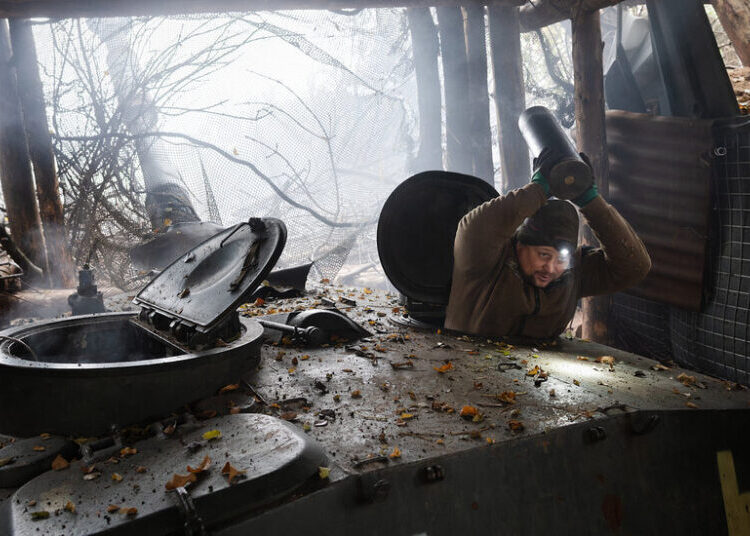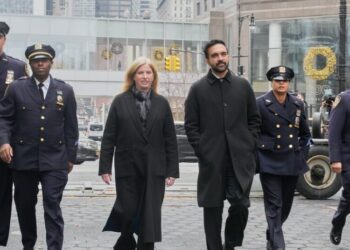Terrorism, then and now
A decade ago, covering terrorism linked to Islamist extremism was a big part of my job. In 2015, I wrote about attacks on the Bataclan concert hall and the satirical newspaper Charlie Hebdo. A year later, terrorists killed dozens by driving into Bastille Day celebrations in Nice and a Christmas market in Berlin. In 2017, I covered three attacks in Britain, including a suicide bombing at an Ariana Grande concert in Manchester, England.
Mass casualty terror attacks felt like something we’d simply have to learn to live with.
But then something changed. Today feels very different. Car-ramming and knife attacks by lone wolf actors who call themselves jihadists still make occasional headlines. But it happens less frequently. And we no longer see the kind of sophisticated quasi-military operations that once killed dozens of people at a time.
There are a number of reasons the era of Bataclan-style terror seems to have faded for now. But we’re still living with its consequences today.
The end of the caliphate
There are reasons behind the decline that almost everyone who studies the phenomenon agrees on.
The first is the downfall of the Islamic State in Syria and Iraq. In 2014, ISIS controlled a territory larger than Portugal. It trained thousands of young European jihadists. But by 2017, the self-proclaimed caliphate had lost almost all its territory, and the compelling narrative that came with it.
Western security services have also gotten better at stopping attacks. France foiled 85 over the last decade and six this year alone, President Emmanuel Macron said last week.
And cityscapes have evolved. Glance around the tourist attractions, or at infrastructure like bridges, and you’re likely to see protective bollards put in place to stop cars.
These changes have created practical problems for would-be terrorists. There’s nowhere to train; plots are discovered more frequently; and attacks are harder to carry out.
It’s around the question of motivation that things get a little more muddled. Is it just that these attacks are harder to pull off, or do fewer people want to commit them? And if so, why?
Radicalization of Islam vs. Islamization of radicalism
There are, roughly speaking, two schools of thought on what drove these attacks. One saw them as the outgrowth of a radical form of Islam; the other thought they were part of a phenomenon that some experts have called “the Islamization of radicalism.”
The first argued that a radical ideology, spread through mosques and by imams but also online, lead to this kind of terrorism; the second argued that these attacks were effectively a youth revolt by second-generation immigrants who happened to seize on Islam as a means of expressing their discontent.
I spoke to the French scholars most associated with each argument: Gilles Kepel and Olivier Roy.
Both find support for their ideas in the fading number of big terror attacks. For Roy, it’s proof that a generational cohort has now largely outgrown its radicalism. For Kepel, it’s a sign that the threat has morphed into something less spectacular but still pervasive online, something he calls “ambient jihadism.”
Others say the two theories are, in fact, complementary and can jointly help explain the new reality of a diminished but lingering threat.
Peter Neumann, a terrorism expert at King’s College London, told me that since Oct. 7 and the subsequent war in Gaza, the number of terror attacks has been rising again. If we don’t feel it much, he said, it’s because these attacks are small in scale, carried out by teenagers and often fail.
The new terrorists are now so nonideological as to be practically indistinguishable from school shooters, he said: “These kids are active in different online subcultures. They have personal motivations, psychological vulnerabilities and often eclectic political ideas. They pick and choose. That creates a phenomenon that sometimes becomes very difficult to categorize. Is that still terrorism?”
These are people whose nihilism is searching for a cause (Roy’s explanation), and who also lack the organization and funding to make their attacks successful (Kepel).
One reason the world should pay more attention, Neumann argues, is that even small-scale attacks can feed another kind of extremism on the far right, which has warned of a clash of civilizations between the West and radical Islam. Part of the far right’s rise, he said, is a legacy of the Bataclan era of terrorism.
Neumann says what we need is a virtual version of what’s been so successful in the real world: bollards for the internet, that can stop people from going down the road to radicalization. Unfortunately, he said, those are the very protections that tech companies seem bent on dismantling.
MORE TOP NEWS
A deadly Russian attack on an apartment building
Russia launched a barrage of missiles and drones yesterday in western Ukraine, hitting a residential building in Ternopil. At least 25 people were killed, and some 73 were wounded, according to the Ukrainian emergency service. It was the first time that a Russian missile had struck a residential complex in the city.
The attack came as President Volodymyr Zelensky of Ukraine sought to revive peace talks during meetings in Turkey. A senior Ukrainian official said that President Trump’s special envoy, Steve Witkoff, and Russian officials have prepared a proposal to end the war, without consulting Ukraine.
Corruption: Zelensky has become embroiled in a multimillion-dollar kickback scandal, which has implicated several of his close associates.
OTHER NEWS
-
Israel launched strikes on Gaza, killing at least 25 people. A day earlier, Israeli strikes on a Palestinian refugee camp in southern Lebanon killed at least 13 people.
-
Nvidia, the world’s most valuable company, will report its latest quarterly results, shedding light on the state of the A.I. boom. It could ease the stock market’s jitters — or make them worse.
-
Larry Summers, the former Treasury secretary, resigned from the board of OpenAI after Congress released emails that showed his communications with Jeffrey Epstein.
-
Two judges resigned from the Miss Universe competition, the second scandal to roil the pageant after an organizer berated a contestant in public.
SPORTS
Football: Curaçao made history as the smallest nation ever to qualify for the World Cup.
Tennis: It was no surprise that Roger Federer was elected to the International Tennis Hall of Fame — but the way he found out was unexpected.
NUMBER OF THE DAY
16 to 21 million years ago
— The estimated date of the first kiss, according to a new estimate by British scientists. They define the act as “non-agonistic interaction involving directed, intraspecific, oral-oral contact with some movement of the lips/mouthparts and no food transfer.” Isn’t that romantic?
MORNING READ
Tor, an idyllic town in the Catalan region of Spain, was the scene of an unsolved killing 30 years ago. The crime was the subject of a book in 2005, a smash hit podcast in 2018 and a wildly popular documentary series last year.
All of that media attention has ignited the imaginations of true-crime enthusiasts, who have turned Tor into a destination of choice. As a result, the town’s residents have become reluctant characters in the case, their stone houses a macabre set for Spain’s “Only Murders in the Village.” Read more.
AROUND THE WORLD
How New York City is staying … New York
New York City is on the move and constantly evolving. But bodegas — the ubiquitous small corner stores dotting blocks throughout the five boroughs — have remained an essential part of city life.
The term “bodega,” popularized by Puerto Ricans, loosely translates from Spanish as “warehouse.” Started by Jewish and Italian immigrants and later reshaped by Spanish-speaking communities, these shops embody the cultural diversity that defines the city. New Yorkers have hosted raves, comedy shows and political events in the stores. Rap stars have featured them in their music.
The stores never have more than a few aisles, but they somehow almost always have what you’re looking for. Watch my colleague Anna Kodé break down the challenges and triumphs of bodegas in the video above.
REPORTER RECOMMENDATIONS
Sydney
Victoria Kim, our Australia correspondent, sent us tips for a great day in the city.
Snack at Tokyo Lamington, a shop in the hip Newtown neighborhood that serves creative takes on lamington, a classic Australian sponge cake with chocolate and coconut.
Swim at Wylie’s Baths at Coogee Beach, one of many rock pools carved into Sydney’s coast. It offers a distinctly local way to enjoy the ocean. Also, you don’t have to worry about sharks — though I’ve been told to be on the lookout for a resident octopus.
Hike the Grand Canyon track, a national park west of Sydney in the Blue Mountains. It is a fern-filled, easy-to-navigate walk through gorges, creeks and waterfalls that reveals another face of Sydney’s natural beauty.
RECIPE
A little miso paste and a dash of soy sauce add umami complexity to this simple garlicky pasta. Use pickled peppers instead of chile flakes for acidity as well as heat. One reader offered this tip: Japanese pickled ginger would work as well.
WHERE IS THIS?
Where is this sacred bathing site?
TIME TO PLAY
Here are today’s Spelling Bee, Mini Crossword, Wordle and Sudoku. Find all our games here.
You’re done for today. See you tomorrow — Katrin
We welcome your feedback. Send us your suggestions at [email protected].
Katrin Bennhold is the host of The World, the flagship global newsletter of The New York Times.
The post What Happened to Europe’s Terrorism Problem? appeared first on New York Times.




